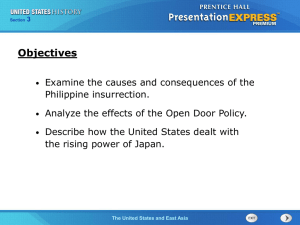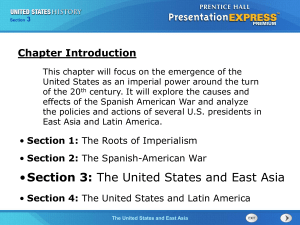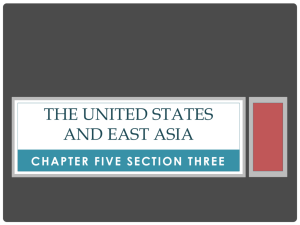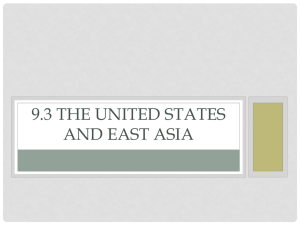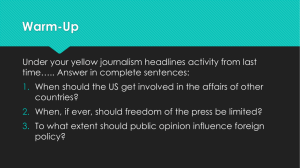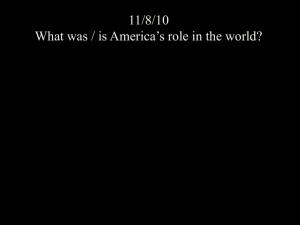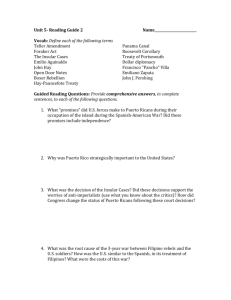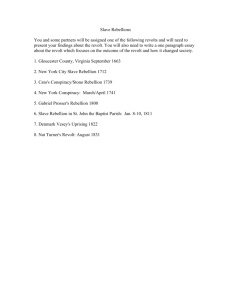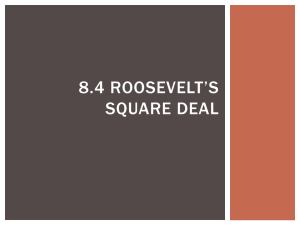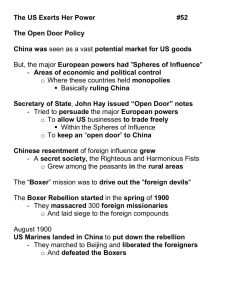chapter 18 section 3 notes a-2
advertisement
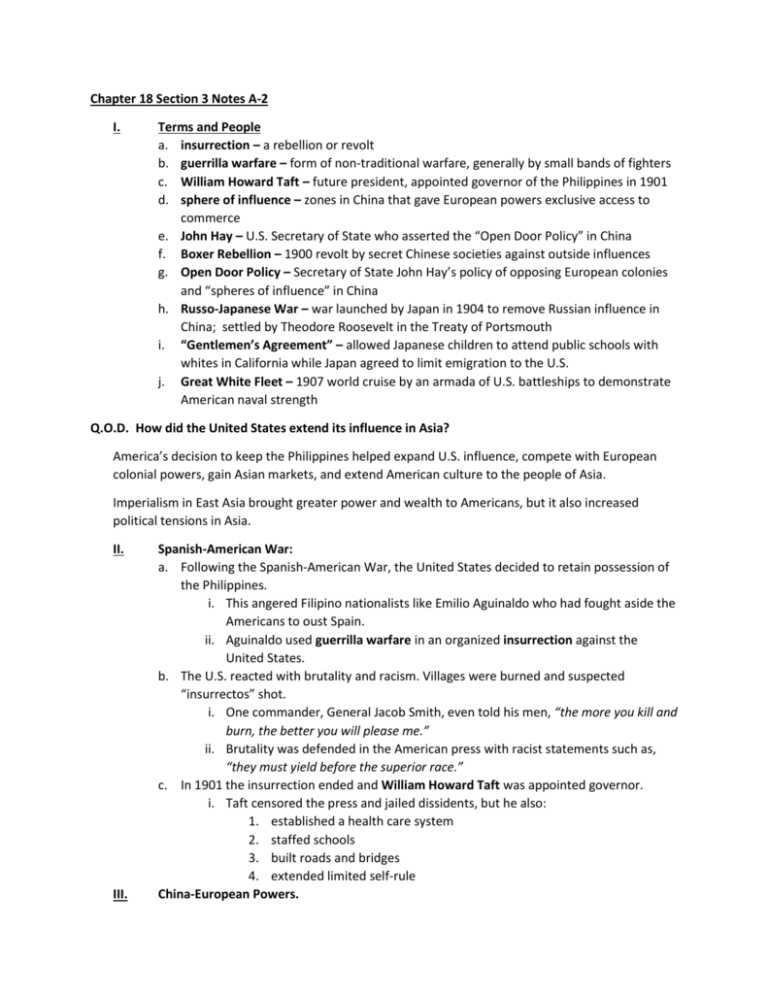
Chapter 18 Section 3 Notes A-2 I. Terms and People a. insurrection – a rebellion or revolt b. guerrilla warfare – form of non-traditional warfare, generally by small bands of fighters c. William Howard Taft – future president, appointed governor of the Philippines in 1901 d. sphere of influence – zones in China that gave European powers exclusive access to commerce e. John Hay – U.S. Secretary of State who asserted the “Open Door Policy” in China f. Boxer Rebellion – 1900 revolt by secret Chinese societies against outside influences g. Open Door Policy – Secretary of State John Hay’s policy of opposing European colonies and “spheres of influence” in China h. Russo-Japanese War – war launched by Japan in 1904 to remove Russian influence in China; settled by Theodore Roosevelt in the Treaty of Portsmouth i. “Gentlemen’s Agreement” – allowed Japanese children to attend public schools with whites in California while Japan agreed to limit emigration to the U.S. j. Great White Fleet – 1907 world cruise by an armada of U.S. battleships to demonstrate American naval strength Q.O.D. How did the United States extend its influence in Asia? America’s decision to keep the Philippines helped expand U.S. influence, compete with European colonial powers, gain Asian markets, and extend American culture to the people of Asia. Imperialism in East Asia brought greater power and wealth to Americans, but it also increased political tensions in Asia. II. III. Spanish-American War: a. Following the Spanish-American War, the United States decided to retain possession of the Philippines. i. This angered Filipino nationalists like Emilio Aguinaldo who had fought aside the Americans to oust Spain. ii. Aguinaldo used guerrilla warfare in an organized insurrection against the United States. b. The U.S. reacted with brutality and racism. Villages were burned and suspected “insurrectos” shot. i. One commander, General Jacob Smith, even told his men, “the more you kill and burn, the better you will please me.” ii. Brutality was defended in the American press with racist statements such as, “they must yield before the superior race.” c. In 1901 the insurrection ended and William Howard Taft was appointed governor. i. Taft censored the press and jailed dissidents, but he also: 1. established a health care system 2. staffed schools 3. built roads and bridges 4. extended limited self-rule China-European Powers. IV. a. In 1899, China was being exploited by European powers. i. U.S. Secretary of State John Hay announced that the U.S. expected “equality of treatment for commerce in China.” 1. This Open Door Policy guided future U.S. actions. 2. Britain, France, Germany, and Russia each carved out spheres of influence or zones in which they enjoyed special access to ports and Chinese Secret Societies a. In 1900, Chinese secret societies began attacking foreigners and missionaries. i. A multinational force from the U.S., Europe, and Japan, put down this Boxer Rebellion. ii. The Chinese government was forced to pay for damages done during the rebellion. iii. This raised nationalist anger and contributed to a 1911 revolt against the Emperor. iv. It eventually took 20,000 soldiers, including 2,000 Americans, like these marching through China’s Forbidden City, to put down the Boxer Rebellion. V. The Russo-Japanese War a. Japan also opposed European interference in China, especially by Russia. i. In 1904, Japan attacked a Russian fleet at Port Arthur in China. ii. The resulting Russo-Japanese War was resolved by Theodore Roosevelt at a conference in Portsmouth, New Hampshire. iii. In 1905, Roosevelt was awarded the Nobel Peace Prize for his role, demonstrating America’s new stature in the world. VI. Anti-Asian Prejudice a. Anti-Asian prejudice, especially on the West Coast, disrupted relations with Japan. i. When the San Francisco School Board banned Asian students from attending classes with white students, Japan was insulted. ii. Roosevelt negotiated a “Gentlemen’s Agreement” in which the school board removed the ban and in exchange, Japan limited emigration to the U.S. VII. American Military Upgrade a. President Roosevelt reminded the world of America’s rising military power by sending the Great White Fleet of sixteen battleships on a world cruise in 1907.
